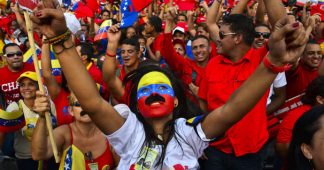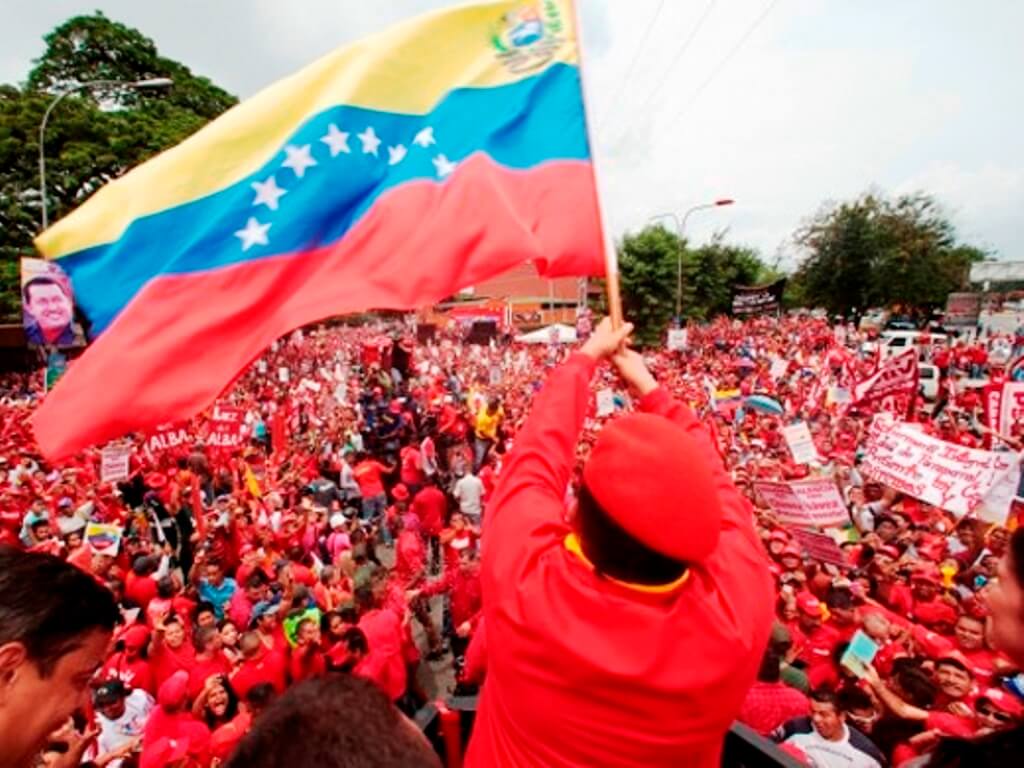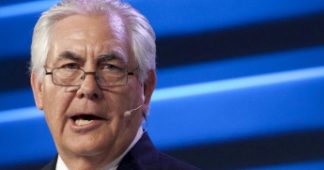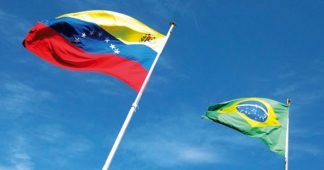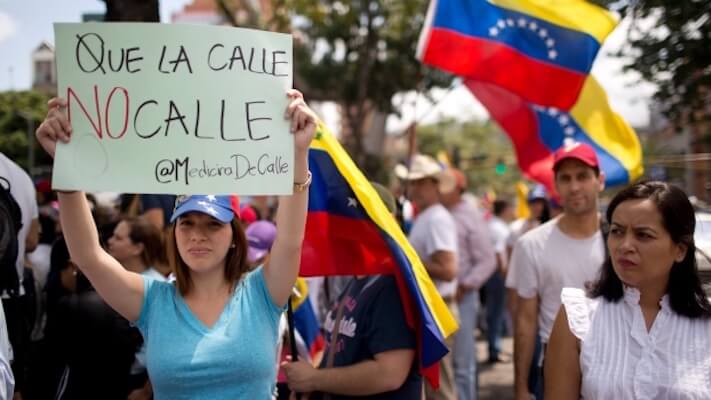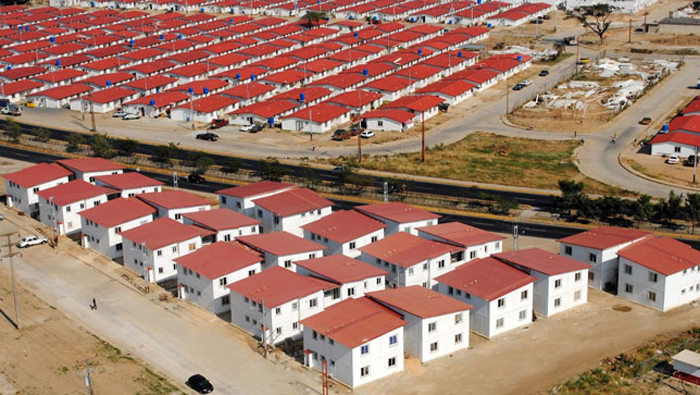By
Over the last four months, hardly a day has gone by without news coverage of the political and economic crisis in Venezuela. At least 124 people have been killed, some by security forces, while participating in or accidentally encountering opposition-led street demonstrations.
The mainstream media narrative is of an increasingly authoritarian government repressing a series of popular uprisings in a desperate bid to hold onto power. Political leaders in the UK, the US and other countries warn that President Nicolás Maduro is turning into a dictator.
But little has been said about the reported 49% to 80% of Venezuelans, both pro- and anti-Maduro, who are “in disagreement” with the radical opposition’s use of violence as a political tool. Not all who oppose Maduro support the radical opposition or want them in power.
While acknowledging that Venezuela’s political unrest “remains mostly confined to middle-class enclaves”, the authors of an article published in the Wall Street Journal suggested that many “poor Venezuelans” are just “too hungry” to march. But rejection of the radical opposition goes far deeper than this. It is rooted in profound historical concerns, not just political and economic, but also racial and cultural.
The ugly truth
Before Hugo Chávez was elected in 1998, Venezuela attracted little international attention. It was seen as exceptionally stable by Latin American standards, and was best known for its beauty queens and its oil. Those national icons represent the racial and cultural politics that are driving today’s unrest.
Let’s start with the beauty queens. While a majority of Venezuelans identify as black, indigenous or mestizo (mixed-race), the country’s beauty queens invariably conform to white beauty ideals. The organiser of the country’s most important beauty pageant has stated that black women are not pretty because their noses are “too wide” and their lips “too thick”. Afro hair is commonly referred to as pelo malo – “bad hair”.
These aesthetic values have political, cultural and economic counterparts. In the mid-19th century, several Latin American governments implemented “whitening” policies along the ideological lines laid out in books such as Facundo: Civilisation and Barbarism. Large scale European migration was promoted for the “improvement” of “the race”. In Venezuela, these policies continued until the 1940s.
This belief in the natural superiority of Europeans was also evident in the economically crucial, foreign-owned oil sector. Professionals and middle managers were white Venezuelans, but labourers were recruited from black and mixed-race sectors. By the time oil was nationalised in 1976, the Venezuelan middle class it helped to create had come to identify with US-style political, cultural and consumer patterns. For these Venezuelans, dubbed “miameros” because of their frequent shopping trips to Miami, oil symbolised civilisation, while the black and mixed-race masses represented the perceived barbarism of the past.
But Venezuela’s apparent “exceptionalism” was an illusion. In the 1960s and 1970s, the “common sense” ideas of progress and modernity promulgated by the oil industry and backed by the government ran into trouble. Social tensions developed around the unequal access to oil profits, and strong currents of barrio and grassroots activism began to surge. The situation worsened in the 1980s as oil prices dropped and the bolívar currency was devalued.
In February 1989, the Caracazo uprisings broke out in anger at newly-imposed, right wing economic reforms. An ensuing military crackdown claimed the lives of more than 400 people, mainly from the barrios. To this day, poorer Venezuelans remember this state violence as an act carried out to protect the interests of the wealthy middle classes and their foreign allies. As a woman from the 22 de Enero barrio told me in 2008: “You never saw anybody on the right protesting against the shooting of us; [they] … never cried when we were shot.”
Barrio politics
In the early years of Hugo Chávez’s rise to power, right wing criticism of the government was frequently couched in racial and cultural terms. The private media portrayed government supporters as hordes of “monkeys” moved by base emotions and swayed by an authoritarian leader.
One anti-Chavista told me in 2005 that a president should be a “señor” who speaks English, and not someone from such a humble background that he only started wearing shoes at the age of eight. Chávez was not fit to be president, she elaborated, “because of his culture, the tiny bit he has … He wants us all to live like he used to live”. For anti-Chavistas, Chávez and his supporters in the barrios represented the perceived barbarism of the past, and this instilled fear in them.
While the Chávez government attracted international attention for its economic and political programmes, it also addressed cultural injustices. Through new cultural policies and social programmes, such as Misión Cultura, Chavismo raised the symbolic status of the historically excluded poor and mixed-race masses. For the first time, previously marginalised people saw their history and cultural values, as they defined them, promoted by the government and included in official representations of the national cultural heritage.
These efforts were extremely powerful, and won the government deep support. As a barrio resident put it to me in 2008:
We have a sense of belonging now … This is the responsibility of all of us, not Chávez alone … he can’t do it without us.
The opposition protests that have flared up since Chávez first came to power need to be understood within this cultural and racial context. Radical sectors of the right wing opposition have repeatedly refused to accept the legitimacy of Chavismo and what it represents. In 2002, they helped organise both a short-lived US-backed coup and oil strikes meant to create chaos and bring the government down. The street demonstrations raging today are aimed at achieving regime change, but the opposition has not indicated what policies they would introduce and how they would deal with the country’s problems if they were in power.
Maduro’s popularity has fallen significantly this year, but many who have withdrawn their support for him feel alienated by the opposition’s anti-poor discourse. They fear that a return to the political right would reverse the gains made under Chavismo, and worse. Their fears are not theoretical; as observed by Gabriel Hetland of the State University of New York at Albany, the opposition has carried out “brutal attacks” directed at “black and brown men … and other people who look Chavista”.
The crisis in Venezuela is not simply a matter of left wing versus right wing political and economic systems. It is also rooted in competing ideas about racial and cultural worth. The ugly truth is that for some, it is still a matter of civilisation versus barbarism.
